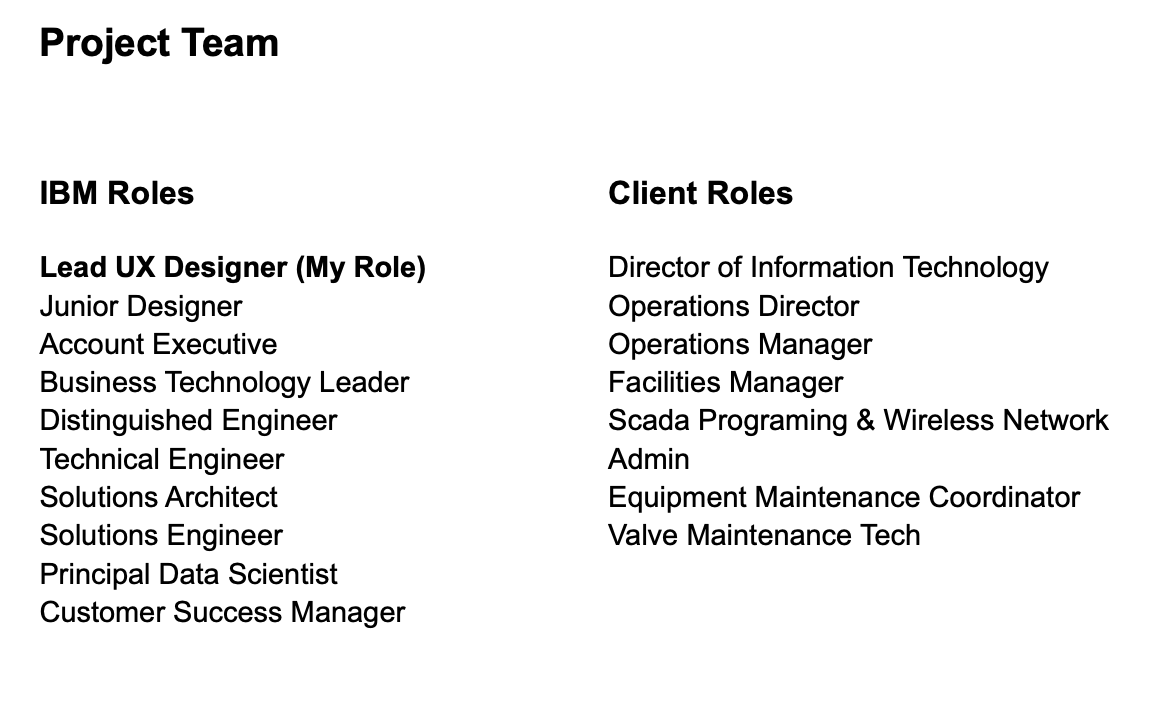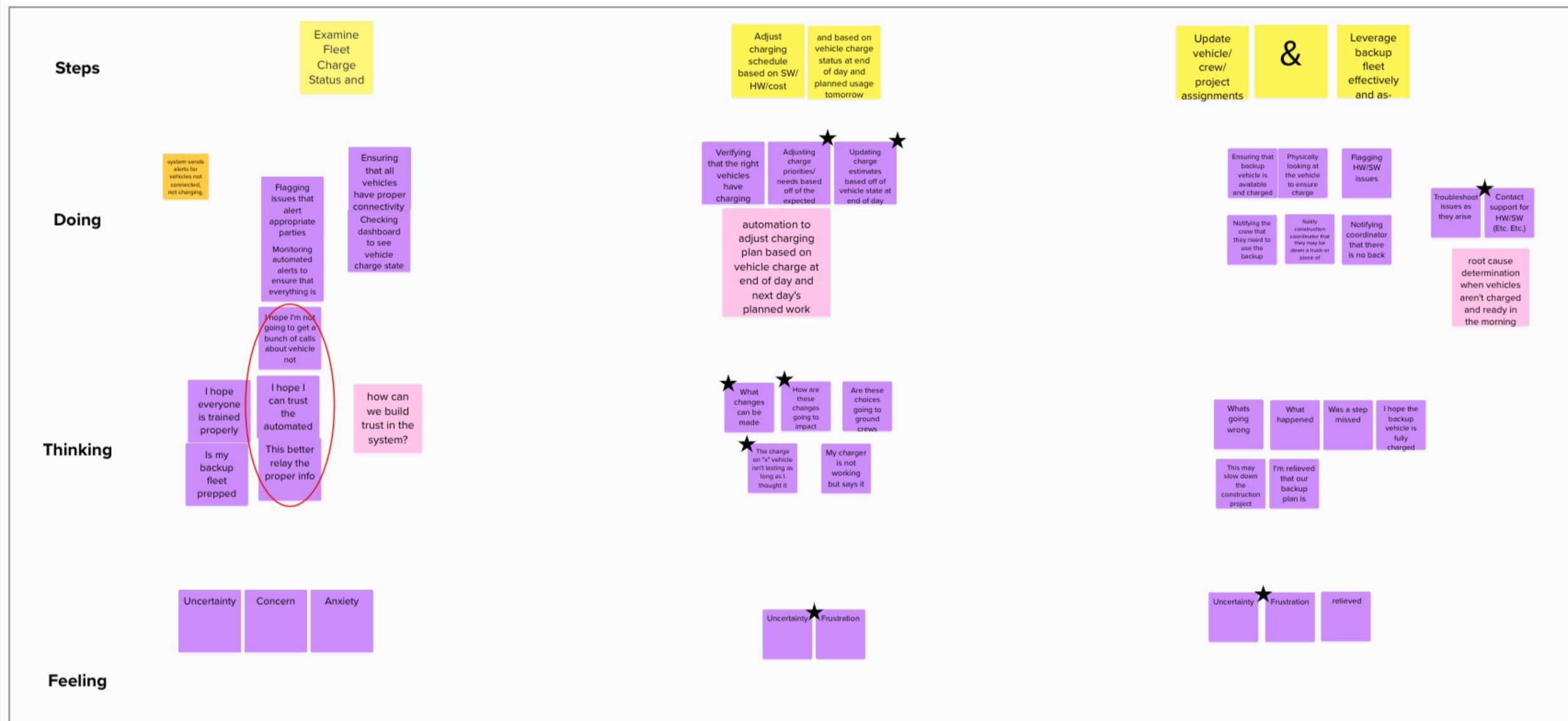Electric Vehicle Infrastructure Design
Helping a California public utility align user needs, technical systems, and policy mandates to design a smart EV charging platform.
⚡ The Challenge
Helix Water District, a public utility in California, needed to comply with the state’s 2025 EV mandate. They required a scalable, intelligent system to manage a mixed fleet of electric vehicles and equipment.
- Operate 24/7 and support emergency response
- Optimize energy use and scheduling
- Integrate with evolving infrastructure needs
🎯 Project Goals
- Define MVP scope and system requirements
- Map user pain points and workflows
- Align technical feasibility with business needs
- Reduce risk through early validation
- Deliver a phased roadmap for implementation
IBM Project Team
- Lead UX Designer (My Role)
- Junior Designer
- Account Executive
- Business Technology Leader
- Distinguished Engineer
- Technical Engineer
- Solutions Architect
- Solutions Engineer
- Principal Data Scientist
- Customer Success Manager
Client Team – Helix Water District
- Director of Information Technology
- Operations Director
- Operations Manager
- Facilities Manager
- SCADA Programming & Wireless Network Admin
- Equipment Maintenance Coordinator
- Valve Maintenance Technician
Approach
To help Helix Water District envision their EV charging infrastructure and define viable solutions, we ran a series of hypothesis-driven workshops with technical experts from both IBM and Helix. These collaborative sessions aligned teams around priorities, clarified system requirements, and informed the path to a scalable, AI-supported charging solution.
Workshop 1: Business Framing Goals:
1. Understand current and future stakeholders responsible for EV implementation and system management
2. Identify key users affected by the 2025 EV mandate
3. Define the desired future state and how it will impact those users
Activity: Stakeholder Mapping
Every project involves people who have a direct stake in its outcome. But missing key voices early in the process can lead to delays, misalignment, or costly redesigns.
To avoid this, we led a stakeholder mapping session with the Helix Water and IBM teams. Together, we identified and visualized the full landscape of people involved—from field technicians and system operators to grant providers, IT staff, and ratepayers. This helped ensure the right perspectives were included from the beginning, and that the solutions we designed reflected operational realities.
Prioritization Mapping
The team mapped the assumptions and risks to allow us to focus on those that were unknown and had the biggest potential impact on the project.
Experience-Based Roadmap
| Time Horizon | Control Center & Maintenance | Charging & Optimization |
|---|---|---|
| Short Term |
• View real-time charge status • Be alerted to charge failures • Quickly identify root causes |
• Estimate cost per charge • Confirm charge started • Track charger usage by vehicle |
| Mid Term |
• Track hardware performance • Predict failures before downtime |
• Predict charge duration • Optimize charger assignment • Generate cost-saving reports |
| Long Term |
• Monitor system 24/7 • Integrate control systems with planning tools |
• Automate charging and scheduling • Access predictive analytics • Compare across fleets or locations |

























